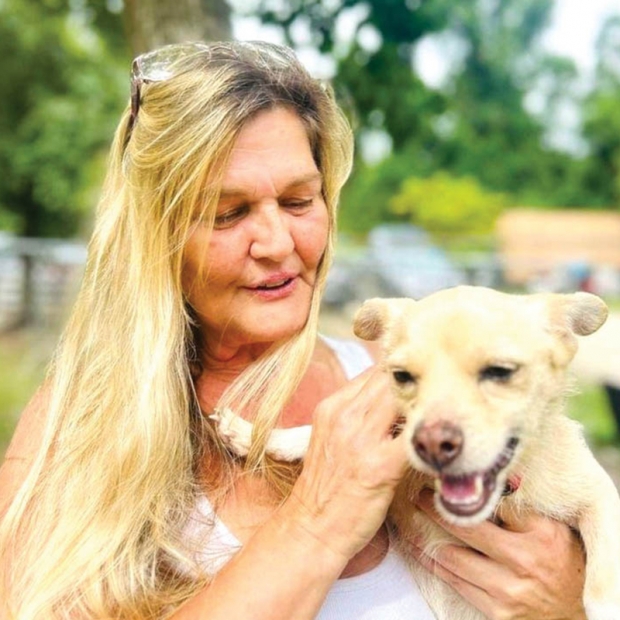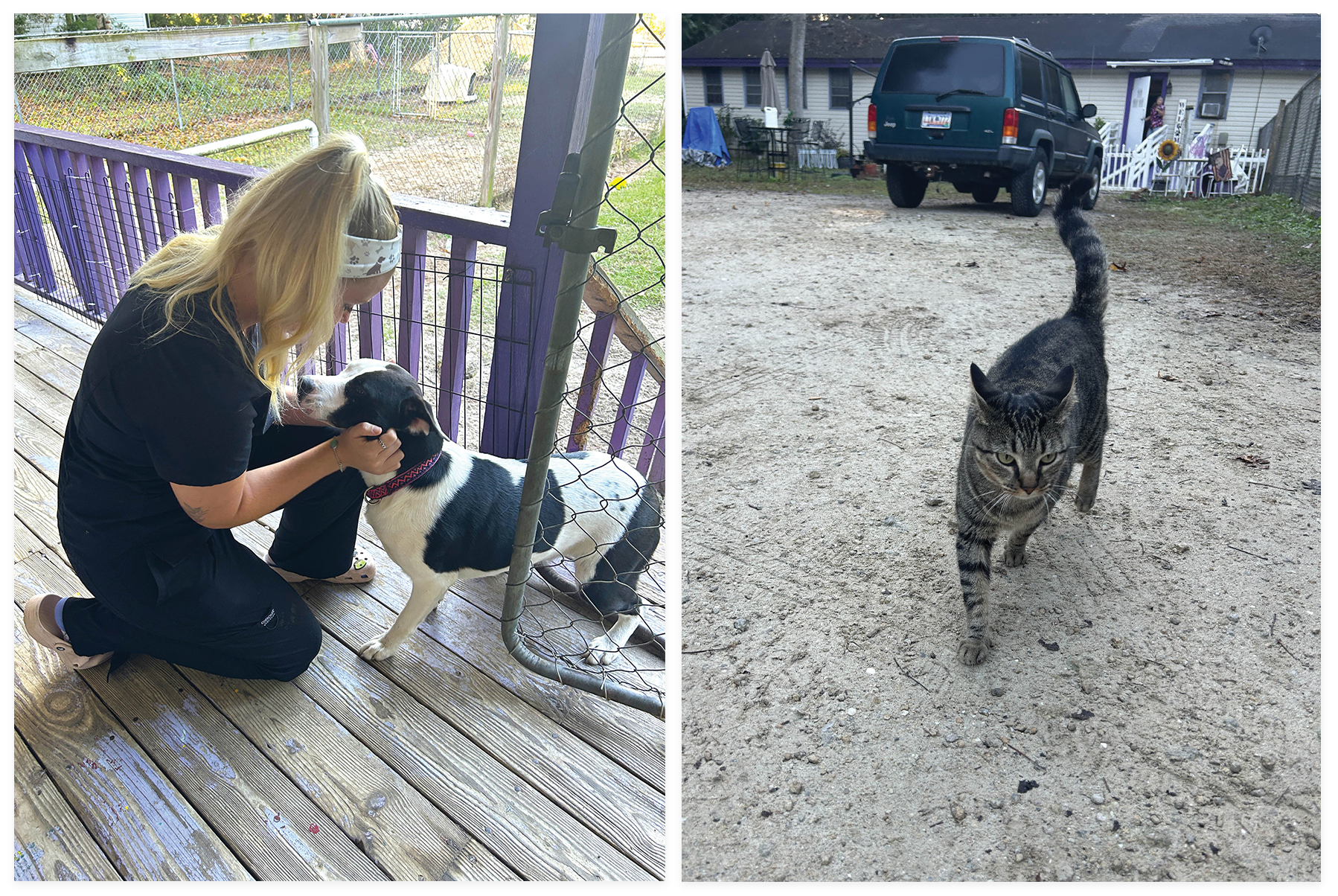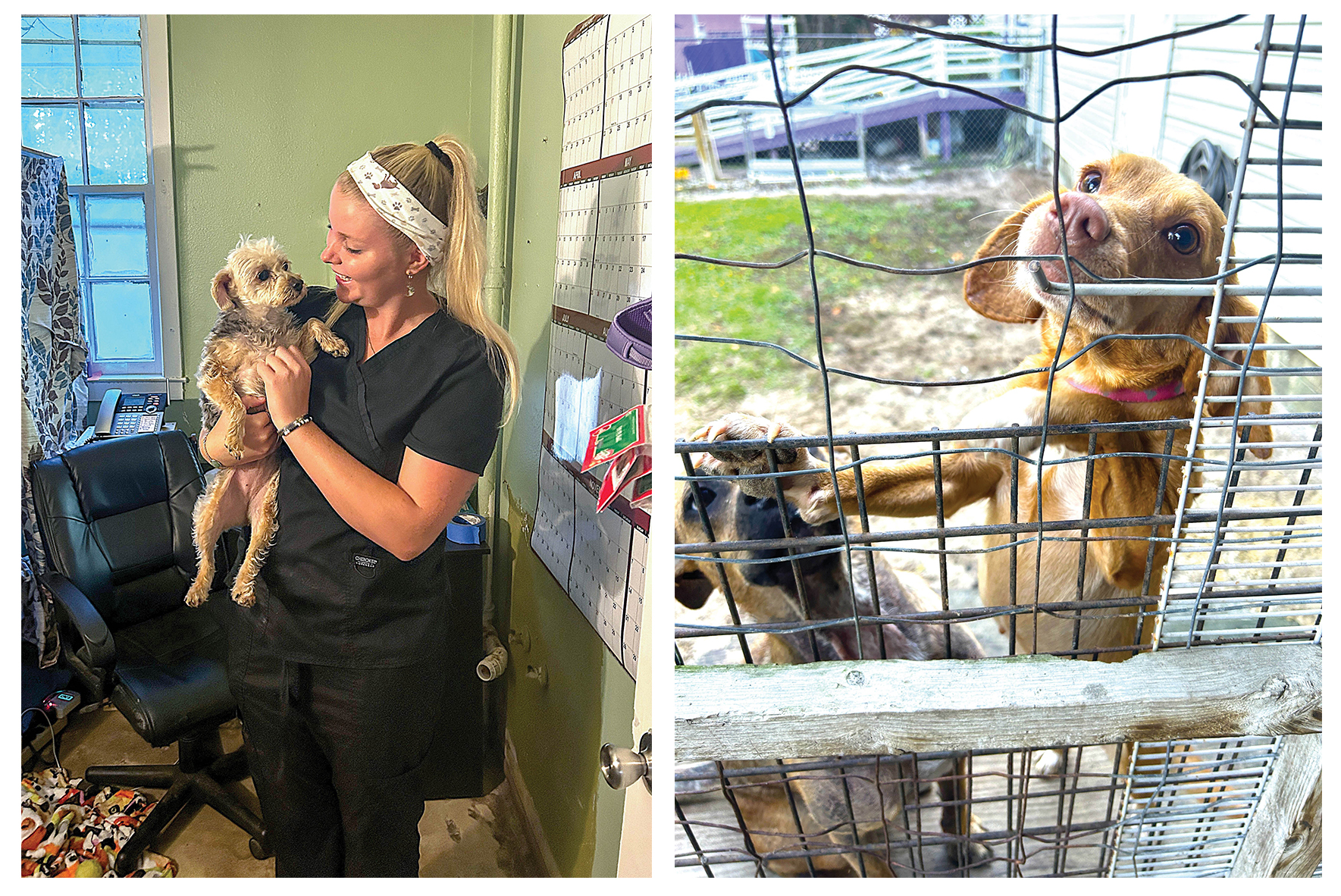A Day in the Life of Kind Keeper Animal Rescue Caregivers

“The days start early, it’s not glamorous work, there’s a lot of poop, and no one is getting rich.”
That’s what I imagine as the no-nonsense employment speech that might be given to staff and volunteers at Kind Keeper Animal Rescue in North Myrtle Beach, with an added: “But you’ll love it here, feel good about the work, and will get puppy kisses and purring kittens as a reward.”
With groundbreaking on a new shelter in Longs planned for early 2025, the hardworking caregivers at Kind Keeper never slow down, and remain focused on their mission as a no-kill shelter and rescue for dogs and cats.
We know that no two days are the same for the animals at Kind Keeper, with enrichment programs, new cat and dog friends arriving almost every day, foster parents coming in to help ease the overcrowding, and new owners taking their dogs or cats to a new forever home. But what about the staff? What are their days like?
I recently spent the better part of the day at Kind Keeper and got to see for myself just how this animal rescue organization and shelter operates.
7:55 a.m.
After parking, I am greeted by a neighborhood free-range cat who walks up to me rubbing her head on my ankle as I make my way to the front door. A few dogs in outside runs wag their tails hopefully and I spot a few more cats roaming the grounds, just neighborhood felines checking out the activity.
The Kind Keeper building, located in a neighborhood just off of Little River Neck in North Myrtle Beach, is not pretty, though it's overflowing with love. Love from the caregivers to their charges, and unconditional love from the dogs and cats who call Kind Keeper ‘home,’ even if only temporarily.
Standing by the office, before I even see a human being, a tiny dog in a tutu scurries down the hall, sees me, spins 180-degrees and heads for cover. From somewhere I hear barking, lots of barking, and can pick up a few meows in the din. Human conversation is hurried—there’s something going on.
When I walk down the hall, I first find 23-year-old Cora Hartigan. She’s a recent Coastal Carolina University graduate with a marketing degree. She’s been expecting me, and we chat for a moment introducing ourselves.
The organized chaos happening early in the morning reaches a fevered pitch as the kennels are actively being cleaned, something that happens first thing every morning. Another few staffers and volunteers feed the animals, and medications are given by vet techs to other cats and dogs with a variety of common and not so common ailments. A new day is starting, and this place is buzzing. The little dog with the tutu gives me another wary look, but figures if I’m with Cora, then maybe I’m not so scary.
“This is Princess,” says Hartigan. “She came to us as a rescue and decided that Belinda was her mom, and now she’s a permanent resident, Belinda’s dog.”
Belinda Mairowicz opened the non-profit, no-kill animal rescue in 2014. The shelter’s mission is crystal clear: save lives, stop abuse and neglect, find the right homes, spay and neuter, provide wellness care, and promote public awareness.
8:12 a.m.
“I’ve had a passion for animals since I was little,” continues Hartigan, who is a transplant from the Boston area. She’s been at the shelter full time for close to two years.
“I started as a kennel worker,” she says, “then moved to half-time in the kennels and half-time doing marketing. I’m transitioning to full time marketing.”
We swing by Hartigan’s tiny office; a space heater on the floor keeps the chill out of the room in a very old building. A third of her office houses a makeshift kennel. Kind Keeper is filled to overflowing, as is just about every shelter in the United States.
There’s plenty of marketing work to do, and her job includes helping to plan and promote public events, do fundraising, and promoting the shelter’s mission through social media and Kind Keeper’s website.
8:23 a.m.
We pass the isolation room, which is filled with puppies suffering from transmittable intestinal parasites. They’re all doing well and when the fecal tests come back clean, they will be made available for fostering and/or adoption.
A medical treatment room down the hall has a few microscopes, refrigerated medicines, and a small medical lab in a corner. This allows for basic blood tests and microscopic viewing of stool samples by trained techs, who can then administer appropriate prescriptions. Kind Keeper takes their animals to the vet when more serious issues arise.
A few dogs are being led to the yard, an outside space where they will spend most of the day if the weather permits. They come in to eat, and then head back out, which also helps with potty training. All the animals are back inside each evening.
There are lots of people—all women—who move with purpose through the narrow hallways. It’s here that I finally meet Kind Keeper captain, Belinda Mairowicz. She’s wearing disposable gloves and surgical booties over her shoes, cross contamination is no joke in this place. She’s been helping out seemingly everywhere, from cleaning to feeding to getting updates from the vet tech and handling another 20 details that only she can address.
“Yes, it’s crazy around here,” she says, reading my mind. “Shelters around the U.S. are in crisis. We’re all severely overcrowded. During Covid there were a lot of adoptions, and then came the abandonments.”
The light at the end of the tunnel is a recently secured 10.5-acre property in Longs that will serve as the new permanent home for Kind Keeper. Artistic renditions and blueprints are complete, and the new Kind Keeper will only resemble the current Kind Keeper in name, staff, and commitment. The state-of-the-art facility, when built, will be many times larger, and better equipped in almost every way. There’s a lot of fundraising to do in the meantime, however, and the mission remains the same regardless of when the transition takes place.
“We get closer every day,” says Mairowicz. “We have a lot of money to raise for the building, but we’re making progress.”
Princess, or ‘Prin,’ as Mairowicz calls her, appears again, having heard her mom’s voice. I’m told Prin likes to wear her tutu, and feels naked without it.

9:20 a.m.
I’m allowed to peek inside one of the two whelping rooms, where a dutiful mixed-breed mom dog nurses her puppies, just a couple of days old, in relative quiet and privacy.
“This is Betty Boop,” says Hartigan. “We just got her in a few days ago. When she came in, she was already showing signs of active labor and she had her puppies the next morning. We got her from a county shelter outside the area that couldn’t handle the situation.”
Betty Boop had 10 in her litter, and two didn’t survive the first day. Two more were not expected to survive more than another day or two, but the rest look healthy and active as they navigate their new lives. Betty Boop and her newborns get constant care and attention from staff and vet techs doing all they can to help ensure survivability.
Maybe today someone will stop by and be put on the waiting list for these pups once they’re ready.
The shelter opens to the public at 10 a.m., Monday through Saturday.
“It depends, but we can get 20 or 30 visitors in a single day,” says Hartigan. “We currently have 12 dogs available for adoption, not including the new puppies and the other puppies who are being treated medically, and maybe 25 cats and kittens. Plus, there’s another 10 or so out in foster. Typically, between cats and dogs, we do seven or eight adoptions each week.”
The adoption fee for dogs is $325, which includes spaying or neutering, deworming, flea prevention, and all their [initial] vaccines.
“It’s really a better deal than most people can find from their vet,” adds Hartigan. Cat adoptions are $125 and include the same benefits.
10:10 a.m.
The equally heartbreaking and heartwarming looks from these animals can create a visceral reaction for the uninitiated. They manage to reach inside and communicate without words. With one look into their eyes, it’s easy to see they want to be our companions and will offer unconditional love in trade for a little food, a little play, and somewhere warm and safe to sleep.
“Most of the animals are strays,” continues Hartigan, “some come from other area shelters that cannot handle one more cat or dog. The rest are owner surrenders and recuses by animal control. This dog is a perfect example.” We look down into a kennel on the floor.
“This is Gomer,” says Hartigan. “He came from a hoarding situation in Georgia where they found 70 Chihuahuas in a single wide trailer. We took ten of those dogs in after another shelter reached out to us.” Nine have already been adopted out.
The networking between shelters in a given region is never ending, each shelter reaching out and saying things such as ‘I’ve got room for two dogs,’ or ‘can you take three cats? We’re out of space.’ The communication and cooperation shows the single-mindedness of most of these shelters: to help the animals in their care in any way they can.
Gomer is not ready for adoption. He has some behavioral issues that must be corrected and works with an animal behaviorist who comes in regularly.
We step around the corner to another kennel and meet a new temporary resident.
“This is Matilda. We got her about a week ago from a county shelter and her flea infestation was so bad she got flea dermatitis and lost all of her hair.” The little dog looks up as if she understands our conversation. Another friendly little mixed-breed dog was sharing the kennel and walks over.
“This is Casey,” says Hartigan, with an extra special smile. “My parents were here visiting from Massachusetts last week and they’ve adopted Casey into our family. They’ll be flying down and driving back home with her in a couple of weeks.”

10:23 a.m.
“Normally, first thing in the morning, I’m working on the social media plan for the day,” explains Hartigan, “Facebook, Instagram, TikTok—all that. Then I’m reaching out to area businesses to ask about their interest in partnering with us. I’ll spend time planning and promoting our public events. As a nonprofit it’s really important, and part of our mission, to get out there in the community.”
It’s not unusual to see the Kind Keeper van at public events with kittens, cats, puppies and dogs, all needing forever homes. This has been an effective way to move the animals and create more public awareness.
Around the corner we find cats and kittens. The cuteness overload from kitten faces is almost too much to bear.
“These kittens were dropped off in a box in the middle of the night,” says Hartigan, “something we definitely do not encourage, but it does happen occasionally.”
The kittens had eaten and are now snoozing in tiny little kitty hammocks in small kennels. When they get older, they’ll spend time in a large cat room each day, which promotes play, exercise, and socialization.

10:55 a.m.
“There are a lot of moving parts,” says Hartigan, who had just scratched the surface on the daily activities. She shows me the laundry.
“We separate the wash to help avoid cross contamination.” Almost every animal in their care has one or more medical issues, some of which are highly transmittable and require vigilance to keep in check. Additionally, each animal has a specific diet, prepared three times daily, and may or may not have their own prescription medicines. A new, much larger facility will aid in these daily tasks.
“We can’t wait for the move,” said Hartigan. Mairowicz, rounding the corner, nods in agreement. “We’re so excited,” she continues. “This place does the job and has been a wonderful resource for the animals, but we can do better, and the new shelter will go a long way toward that goal.”
“I’ll miss this old place,” adds Mairowicz, wistfully, even as she knows the potential for helping more animals will make the effort worthwhile. Many thousands of otherwise doomed cats and dogs once found their way into the old building, and into the hearts of the adoptive pet parents, moving through Kind Keeper like the pearly gates, on to a much better place in forever homes. The staff knows this and knows how important the old (and still currently used) building is.
With my tour complete, and after a better understanding of the challenges, commitment and passion it takes to work in and operate a no-kill shelter, it’s time to leave the staff and volunteers to their fulfilling, but exhausting day ahead.
If you feel passionate about helping animals, Kind Keeper would gladly accept your donations of pet food, supplies, and, most importantly, financial help. They welcome your visit after 10 a.m. Monday – Saturday at 1500 LD Dr., North Myrtle Beach. (843) 427-4388, www.kindkeeper.org